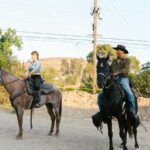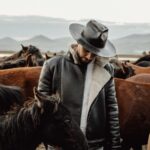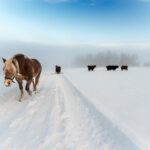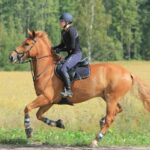In the heart of southern France, where the Rhône River meets the Mediterranean Sea, a mythical landscape unfolds—the Camargue. This vast wetland sanctuary isn’t just remarkable for its flamingos and salt flats, but also for its most iconic inhabitants: the legendary white horses that have roamed these marshlands since time immemorial. The Camargue horses, with their striking white coats and untamed spirit, have become symbols of freedom and resilience. These ancient equines have adapted to thrive in one of Europe’s most unforgiving yet beautiful ecosystems, forming an inseparable bond with both the land and its people. Their story is one of survival, cultural heritage, and a rare harmony between wildness and human partnership that continues to captivate the imagination of visitors from around the world.
Origins and Ancient History
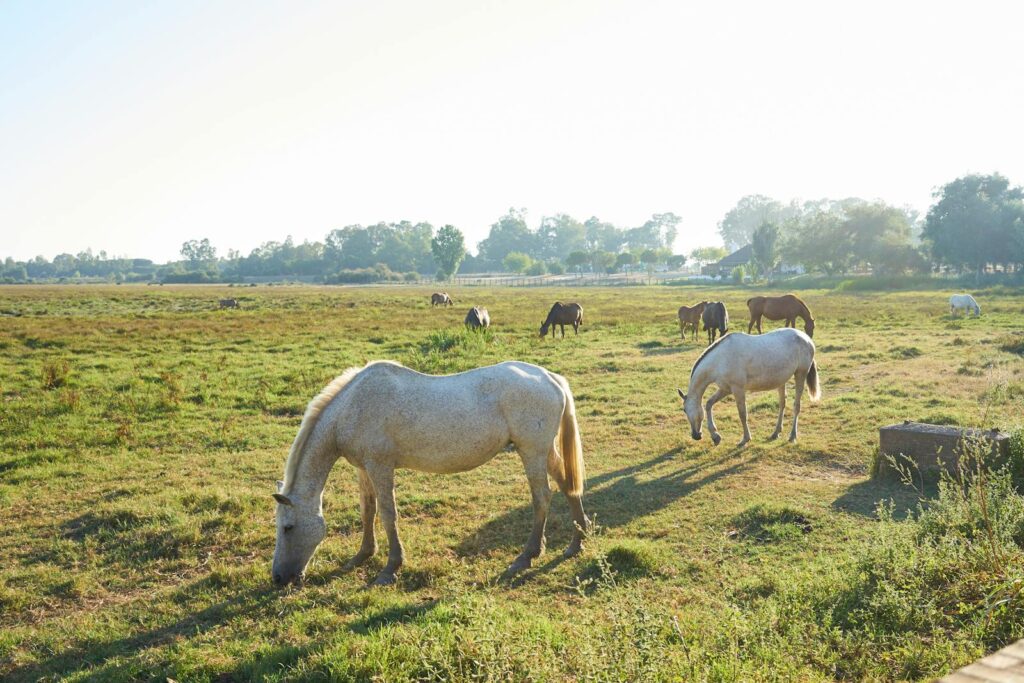
The origins of the Camargue horse stretch back into prehistory, with evidence suggesting these horses have inhabited the region for thousands of years. Cave paintings discovered in southern France depict horses remarkably similar to today’s Camargue breed, suggesting their presence dates back to at least 15,000 BCE. Many experts believe they are one of Europe’s oldest horse breeds, possibly descendants of the prehistoric Solutré horse. Archaeological findings reveal that these horses were already adapted to the marshy environment during the Paleolithic era. Their remarkable consistency in appearance over millennia speaks to their success as a naturally evolved breed, shaped primarily by their environment rather than extensive human interference.
Physical Characteristics of the White Guardians
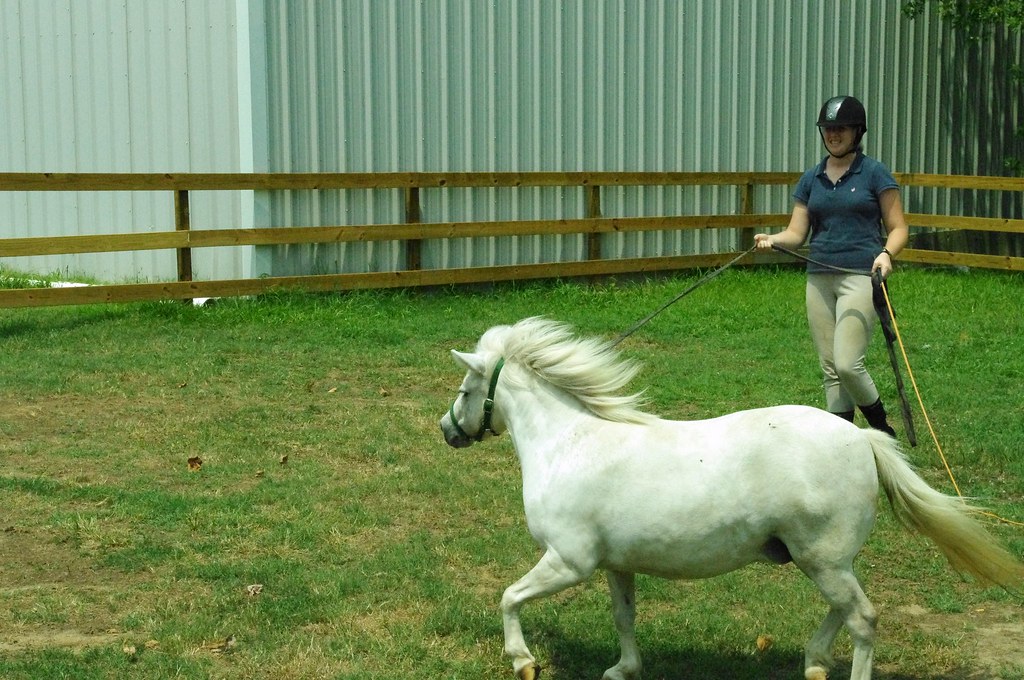
The Camargue horse is instantly recognizable by its distinctive appearance, which perfectly suits its challenging native environment. Standing between 13.1 and 14.3 hands high (135-145 cm), these horses are compact and muscular with broad chests, strong shoulders, and short, sturdy legs that help them navigate marshy terrain. While born dark gray or black, they gradually lighten with age until reaching their characteristic white or light gray coat by around 4-5 years old—earning them the romantic nickname “Horses of the Sea.” Their thick manes and tails provide protection against insects and harsh weather. Perhaps most remarkable is their genetic adaptation to wetland living: their hooves have evolved to be broader than typical horses, preventing them from sinking into the muddy Camargue soil.
Life in the Marshy Wilderness

Life for Camargue horses in their natural habitat is defined by remarkable adaptation to a constantly changing environment. These resilient animals navigate a landscape that alternates between drought and flooding, subsisting on the coarse vegetation of the marshlands that other horse breeds would find unpalatable. They live in hierarchical herds led by a dominant stallion who protects the group from predators and manages access to the best grazing areas. Camargue horses have developed specialized behavior to cope with the ubiquitous biting insects, including standing in smoke from fires lit by gardians (local cowboys) or submerging themselves in water. Perhaps most impressive is their swimming ability—they move through the region’s many waterways with natural ease, a skill essential for survival in this amphibious landscape where land and water constantly intermingle.
The Guardians of the Camargue

The profound relationship between Camargue horses and the gardians—traditional cowboys of the region—represents one of Europe’s most iconic human-animal partnerships. For centuries, these skilled horsemen have relied on Camargue horses to manage the region’s famous black bulls, creating a unique pastoral culture that continues today. Gardians select horses based on their intelligence, agility, and calm temperament in the face of charging bulls. The training process begins early, with young horses learning to respond to subtle weight shifts rather than conventional rein controls, allowing riders to keep both hands free during cattle work. This partnership extends beyond work—many gardians maintain deep personal connections with their horses throughout their lives, with some families having worked with the same bloodlines for generations. Together, horse and rider maintain traditions that have changed little since medieval times.
Breeding and Conservation Efforts

Modern conservation of the Camargue horse balances preserving their natural characteristics while ensuring genetic diversity in a limited population. Since 1978, the breed has been officially recognized and protected by the French government through the “Livre Généalogique de la Race Camargue,” a studbook that establishes breeding standards and lineage tracking. Conservation efforts prioritize maintaining the breed’s hardiness, disease resistance, and adaptation to the wetland environment. Only horses born and raised in the Camargue region can be registered as purebreds, with strict inspections ensuring conformity to breed standards. Conservation organizations like the Parc Naturel Régional de Camargue work with local breeders to manage the delicate ecological balance that supports these horses’ natural lifestyle. These efforts have proven successful, with the population now stable at approximately 3,000-5,000 purebred individuals after facing near extinction in the early 20th century.
The Camargue Horse in Folklore and Culture

In Provençal folklore, the Camargue horse occupies a place of mythical significance, often depicted as emerging from the sea like supernatural beings. Ancient legends tell of these horses being born from the union of the wind and sea foam, explaining their white coats and untamable spirit. They feature prominently in traditional celebrations throughout the region, particularly during the Fête de la Sainte-Marie-de-la-Mer, where mounted gardians parade through streets and into the Mediterranean Sea to honor their patron saint. Numerous poets, painters, and filmmakers have drawn inspiration from these animals—perhaps most famously, writer Frédéric Mistral, whose epic Provençal poem “Mirèio” celebrates their beauty and wildness. The horses have become symbols of regional identity so profound that their silhouette appears on everything from local government emblems to tourist souvenirs, representing both the natural and cultural heritage of the Camargue.
Training and Working Life

The training methodology used with Camargue horses reflects centuries of practical experience adapted to their unique temperament and working environment. Unlike conventional horse training that often emphasizes submission, Camargue horses are taught through partnership, with training typically beginning around three years of age when their coat begins turning white. The initial focus is on building trust and teaching the horse to respond to the rider’s weight shifts and leg pressure, skills essential for working with cattle when hands must remain free to use the traditional trident. Particularly valued is the breed’s “bull sense”—an innate ability to anticipate and counter a bull’s movements. Working Camargue horses may spend 8-10 hours daily in the saddle during busy seasons, moving through challenging terrain that would exhaust most domestic breeds. Their legendary stamina comes from centuries of natural selection coupled with a traditional diet of marsh grasses supplemented only minimally with hay during winter months.
Threats to the Traditional Lifestyle

Despite their protected status, Camargue horses face modern challenges that threaten their traditional free-ranging lifestyle. Agricultural intensification has dramatically reduced available natural habitat, with rice fields and salt evaporation ponds replacing many natural wetlands. Climate change presents perhaps the gravest concern, as rising sea levels threaten to alter the delicate freshwater-saltwater balance that sustains the unique Camargue ecosystem. Tourism pressure creates additional stress, with increased demand for horse riding experiences sometimes leading to exploitation of animals not suited for such work. Disease pressures have intensified as well, with African horse sickness moving northward from Africa, posing a potential catastrophic threat to populations with limited genetic diversity. Conservation organizations are working to address these challenges through habitat protection, sustainable tourism practices, and emergency planning for disease outbreaks, but the battle to maintain this ancient breed in its traditional setting remains ongoing.
Annual Traditions and Celebrations

The calendar of the Camargue region revolves around ancient equestrian traditions that showcase the close relationship between horses, bulls, and the local community. The most spectacular of these is the “Abrivado,” where gardians on Camargue horses guide bulls through village streets toward the arena for bloodless bullfighting events. Equally important is the “Ferrade,” the traditional branding of young bulls, where gardians demonstrate extraordinary horsemanship as they separate calves from the herd. May brings the internationally famous pilgrimage of Saintes-Maries-de-la-Mer, where hundreds of Camargue horses and gardians escort statues of saints to the sea in a tradition dating back to the Middle Ages. Throughout summer, villages host “Courses Camarguaises,” non-lethal bullfighting events where the skill of both horse and rider are on full display. These celebrations not only preserve cultural heritage but also serve as critical economic support for breeders maintaining traditional herds in an increasingly modernized world.
The Camargue Ecosystem and Its Influence
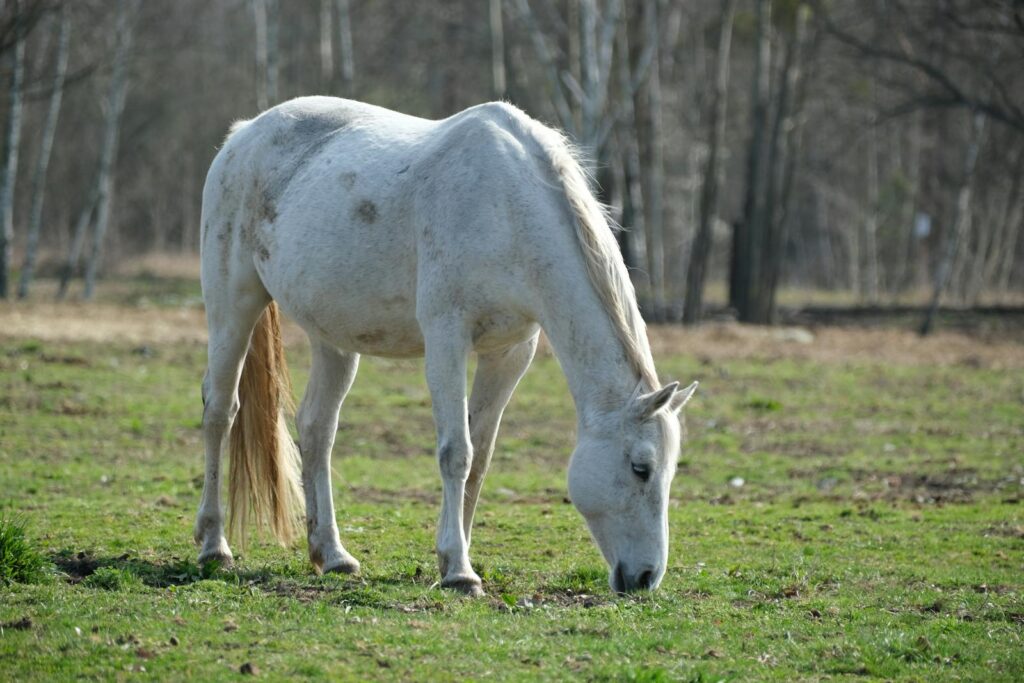
The Camargue horses play a crucial ecological role in maintaining the health of their unique wetland habitat through their grazing patterns. Their selective feeding on certain plant species helps maintain biodiversity by preventing any single species from dominating the ecosystem. The horses’ movement through the marshes creates paths that serve as firebreaks, helping manage the spread of wildfires that periodically sweep through the dry summer landscape. Their hoofprints create small depressions that fill with water, becoming microhabitats for amphibians and aquatic invertebrates. Scientific studies have documented how areas with traditional horse grazing maintain significantly higher bird diversity than similar areas without equine influence. This ecological relationship exemplifies one of Europe’s oldest continuous examples of sustainable livestock management, where domestic animals function as ecosystem engineers contributing positively to conservation goals rather than detracting from them.
Camargue Horses in Tourism

Tourism centered around the Camargue horses has become both an economic lifeline and a challenge for the region’s traditional horse culture. Visitors from around the world come specifically to witness these iconic white horses in their natural setting, creating essential income for local communities and incentivizing habitat preservation. Many manade (traditional breeding farms) now offer guided tours where visitors can observe free-roaming herds and learn about their management from authentic gardians. Horse-riding excursions through the national park provide unforgettable experiences while educating riders about conservation concerns. Yet this tourism boom creates complex pressures, with some operators prioritizing profit over horse welfare and authentic experiences. Responsible tourism initiatives have emerged in response, promoting experiences that support traditional breeding practices while minimizing stress on the animals. The regional government has implemented certification programs for tour operators who adhere to strict ethical guidelines, helping visitors distinguish authentic experiences from exploitative ones.
Genetic Research and Future Preservation

Advanced genetic research has revealed fascinating insights about Camargue horses while opening new avenues for their preservation. DNA studies confirm their ancient lineage, with genetic markers showing close relationships to other primitive European breeds like the Sorraia of Portugal and the Exmoor pony of England. These findings suggest they represent one of the oldest genetic horse types in Europe, possibly descended directly from wild horses that survived the last ice age. Contemporary genetic management focuses on maintaining maximum diversity within this small population while preserving the adaptive traits that make them uniquely suited to their environment. A gene bank established in 2010 preserves genetic material from exceptional individuals, creating a backup for future conservation efforts. Research continues into the genetic basis for their remarkable disease resistance, particularly their natural immunity to certain insect-borne illnesses that devastate other horse populations—knowledge that could benefit equine health globally while ensuring these living legends continue their ancient partnership with the Camargue for generations to come.
Conclusion: A Living Heritage

The Camargue horses represent far more than just another breed—they embody a living connection to our distant past and a model for sustainable relationships between humans, animals, and landscapes. Their story reminds us that some partnerships between people and animals have evolved not through domination but through mutual adaptation and respect. As climate change and development reshape our world, the resilience of these horses offers valuable lessons about adaptation and endurance. Visitors who witness these white horses galloping through the marshes or swimming across lagoons experience something increasingly rare—a glimpse of authentic wildness persisting alongside human civilization. The continued survival of the Camargue horse tradition depends on our collective commitment to preserving not just the animals themselves but the entire ecological and cultural context that gives meaning to their existence. In protecting these horses, we protect a living heritage that connects us to our ancestral relationship with the natural world and reminds us what’s possible when humans partner with nature rather than attempting to conquer it.




